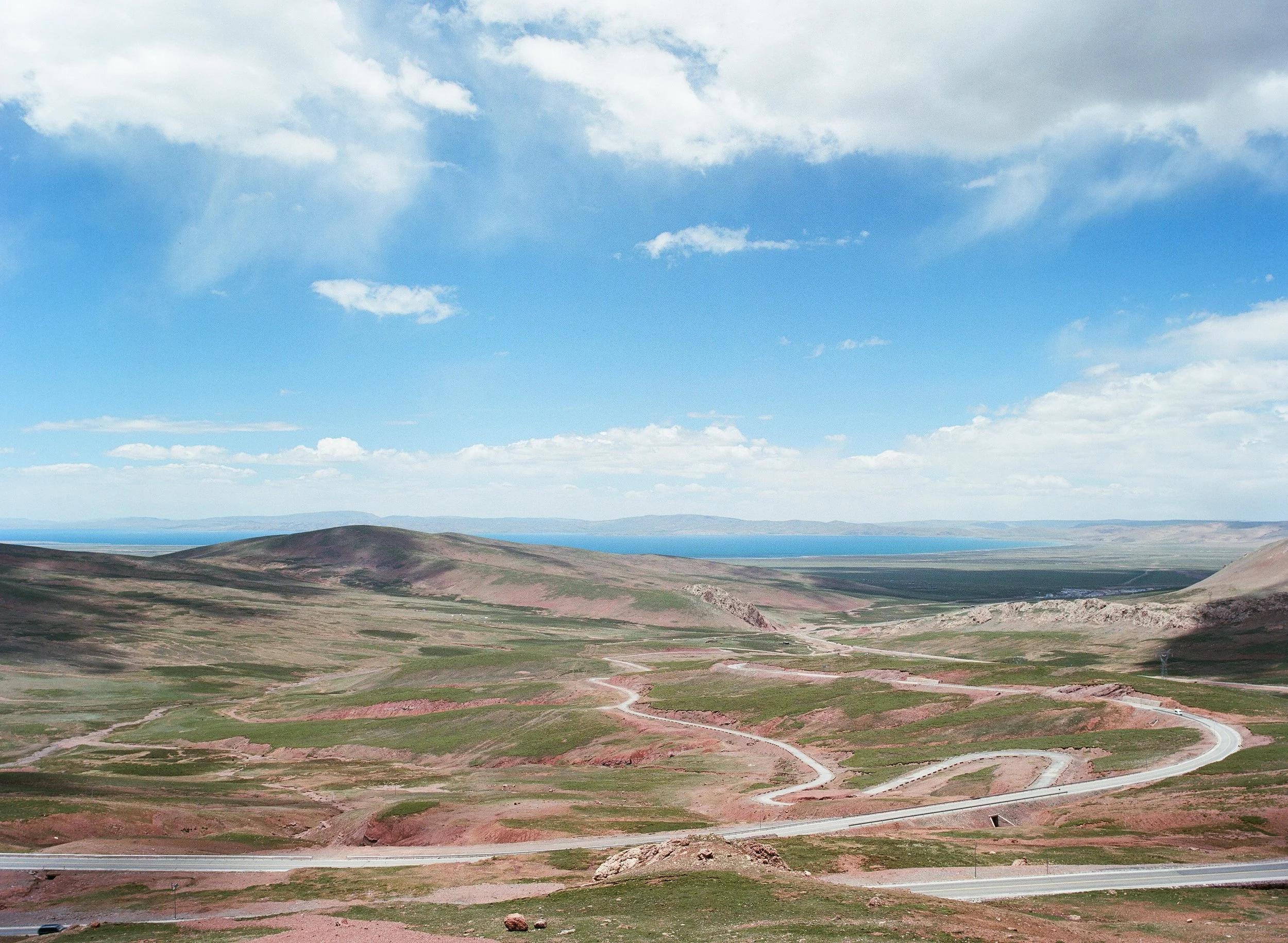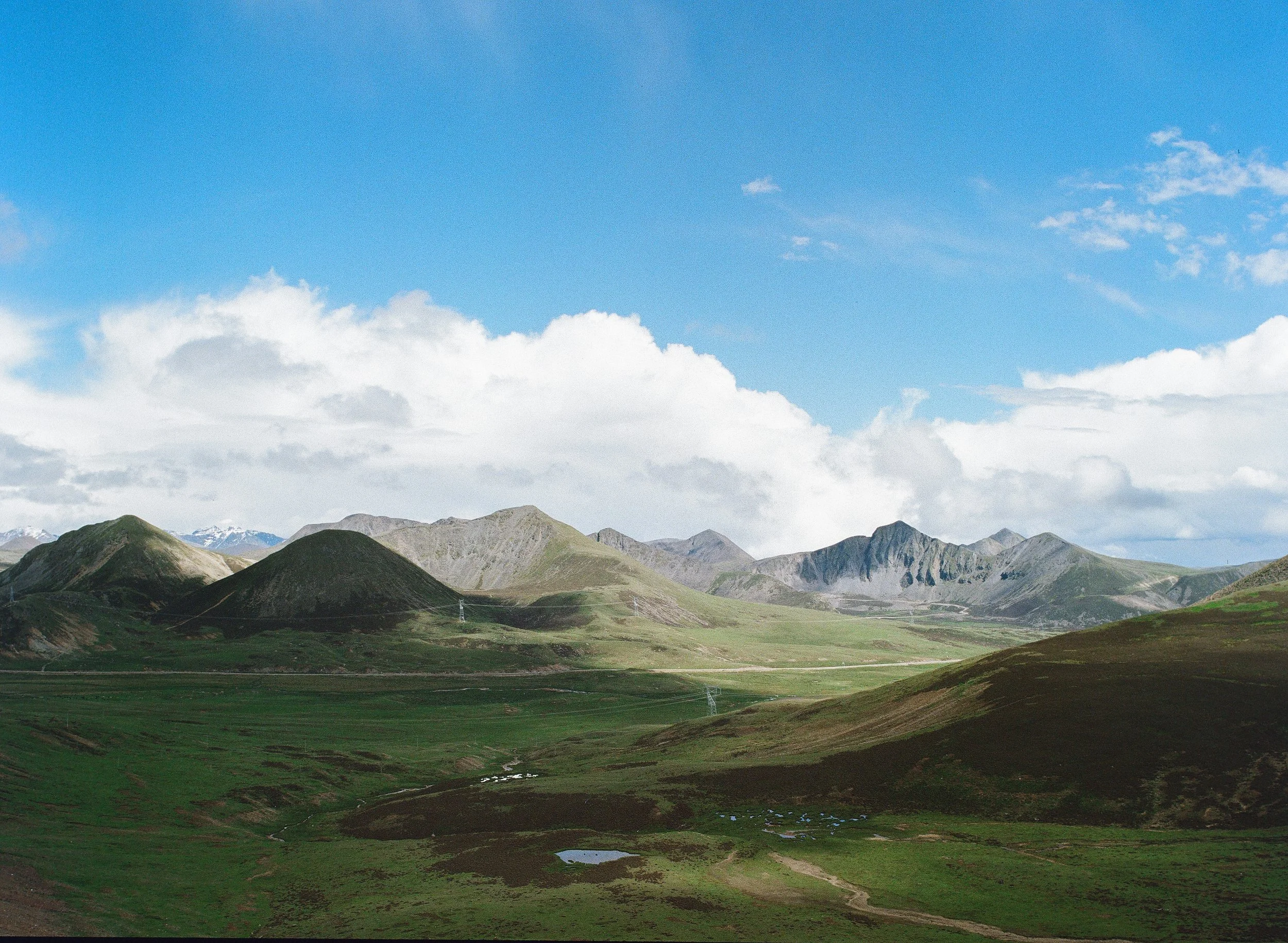
西藏 - Tibet
A summer road trip
2025 June
From Kunming to Lhasa
For 17 days during June of 2025, my father, mother and I made the trip from Kunming, Yunan to Lhasa, Tibet. Travelling in a caravan, we traversed approximately 2500 kilometers over the course of two weeks, visiting many major cities and towns, and stopping in between to camp at times.
When travelling to Tibet by road, people often take the 318 National Highway, starting from Chengdu, Sichuan. However, since we prioritized a slower paced trip within our timeframe, we decided to start from Kunming, first travelling up the expressway, pass by the 214, and eventually merge onto the 318. Our first stop was Dali Bai, west of Kunming.
Campground near Rakwa Tso, Baxoi County
The journey ahead
The major roadblock of this trip was literally roadblocks. Many parts of the National Highways, frankly, is frail, and that is expected of roads built back in the 1950s. The truth is, although officially named a “highway”, it is a normal road that is laid throughout mountain ranges and rivers. And being built near cliffs, water sources, and so many more volatile aspects of nature, the integrity of man-made roads is expected to be prone.
Despite all this, the 318 is still currently acting as the primary path connecting Tibet to the rest of China, the result of this is a cyclical problem of repairing a road that is eventually getting damaged again. When a part of the road collapses or mudslides occur, immediate repairs are sent out, blocking off the road for hours of a day, making desperate effort to keep the roads functioning.
Family of three, Grandmother, Mother, and son, taken near Dalu (打魯)
This photograph was taken during our drive up to Deqin County on the 214 National Highway. As there were immediate roadworks, we were stopped for about 2.5 hours. As I walked about, I noticed this family of three getting out of their car and hiked up the side of the road. I followed them up and, before I knew it, I was sat down and offered food before I got past saying “hello”. They enthusiastically offered Tingmo (steamed bread) and Yak Butter Tea, they did not take “no” as an answer.
The ever changing landscapes of Tibet
Tibet has an abundance of water. Contrary to my groundless impression prior, Tibet is home to a huge variety of biomes and landforms. Simply by following the 318 Highway, we crossed over many different areas including, wetlands, deserts, meadows, rivers, canyons, tundras, grasslands, and lakes. Driving on the 318 never bored us as the scenery before us always changed rapidly, one moment we were at 5000m ASL in an alpine meadow, and 10 minutes later we could drop 2000m and be driving in a canyon next to a massive river.
An open field on the 318 Highway, past Markam County towards Rumei Zhen
Those living in Tibet
It is impossible to reflect on “Tibetan” as a tribe in a few sentences, but attempt I shall nonetheless. The most obvious problem in summarizing this is the diversity in Tibet, there are large cities, small towns, rural villages, and every place is home to very different people. They lead such different lifestyles that, some can be farmers, and others can be CEOs.
I talked to a handful of people throughout my trip, wether it was the curious passerby studying our caravan, or a shop keeper who dropped a bag of goods, most were quite willing for a short chat, but the locals often seemed a little shy. For the most part, people were very welcoming and friendly, but rarely did people show interest unless approached.
At a horse racing event near Namu Lake
If I may be so bold as to make a claim, I might describe Tibetans to be a tribe of people who are “quiet”. There is silence in-between conversations, space between people, and an indescribable stillness, nevertheless, there is a level of “boldness” in their lives. I think the boundless and copious amounts of Tibetan prayer flags hung all over is an analogy of their lives.
It stands surrounded by nature, quiet and resilient, yet vibrant and bold.
Tibet in Color
Recently, I found myself able to be much more expressive photographically through black and white, hence, my heavy focus on shooting black and white film throughout the trip. However, having witnessed Tibet in person, it is an absolute disservice to Tibet not to showcase some of the gorgeously colorful sceneries.
Deqin County, Diqing Tibetan Autonomous Prefecture
And finally, to my Dad, to which none of this could have happened without him.
Thank you for bringing and showing me around the world.



















































































































